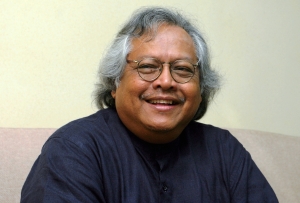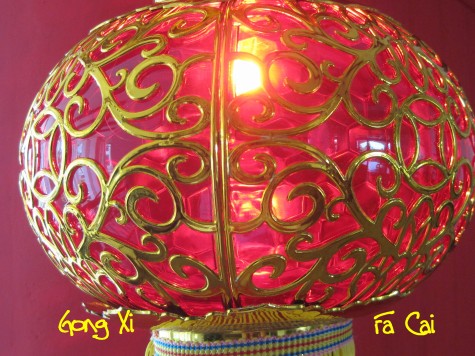Malaysia tables minimum wage bill
The Dewan Rakyat yesterday tabled a minimum wage bill for the first and second reading, reports the New Straits Times.
The National Wages Consultative Council Bill 2011 will pave the way for implementing a structure for minimum wages in Malaysia.
The Bill wants to replace the Wages Council Act 1947 and set up a National Wages Consultative Council to conduct studies on minimum wage.
Click here for more.
Related articles
- Don’t hinge minimum wage on revenue allocation, NLC tells state govts (vanguardngr.com)
- Minimum wage issue, a time bomb – ACN (vanguardngr.com)
- Florida Raises Minimum Wage (restaurantmanageability.wordpress.com)
- How Much is Minimum Wage in California (socyberty.com)
- Your Take: Tipping, Taxes & Social Norms (bargaineering.com)
- in haiti, the US opposed minimum wage rise, cables show (hahayourefunny.wordpress.com)
- Is Texas Screwed Up Because It Is Full of Mexicans? (robertlindsay.wordpress.com)
- Labor vs. capital spending (csmonitor.com)
- Whither Malaysia’s minimum wage bill? (malaysiasdilemma.wordpress.com)
- An Honest Day’s Pay (cubiksrube.wordpress.com)
ILO standards to protect domestic workers
Good news for domestic workers all over the world.
Delegates at the 100th annual conference of the International Labour Organisation (ILO) today “adopted a historic set of international standards” to improve the lot of domestic workers who number between 53 and 100 million.
“We are moving the standards system of the ILO into the informal economy for the first time, and this is a breakthrough of great significance,” said Juan Somavia, ILO Director-General. “History is being made.”
More here.
Related articles
- Countries vote to protect domestic workers (ctv.ca)
- [From the web] New International Convention on Domestic Workers Rights Must Be Respected by Governments, Says Global Union Body (hronlineph.wordpress.com)
- Coalition refuses to ratify UN measure protecting domestic workers (guardian.co.uk)
- Countries back new rights for domestic workers (seattlepi.com)
- “A dream come true”: ILO convention on decent work for domestic workers (gfmd2010.wordpress.com)
Singapore ratifies MLC, 2006
Singapore has ratified the International Labour Organisation‘s Maritime Labour Convention, 2006 (MLC, 2006) — making it the first Asian country to do so.
Click here to read.
Related articles
- Australia to ratify ILO OHS Convention, says Senator (safetyatworkblog.wordpress.com)
Making sense of Japan’s nuclear crisis
The current crisis involving several of Japan‘s nuclear power reactors continues to evolve. Regular updates are available on “All Things Nuclear”, a blog by Union of Concerned Scientists.
For background information on nuclear accidents and the use of terminology read Nuclear Accident ABCs factsheet put together by Union of Concerned Scientists.
Related Articles
- Japan’s nuclear fears intensify at two Fukushima power stations (guardian.co.uk)
- Explosion at Nuclear Power Plant in Japan (abcnews.go.com)
- With 34 Reactors in At Risk Zones, France Wonders If It’s Hostage to Nuclear Power (treehugger.com)
- French nuclear agency rates Japan accident 5 or 6 (reuters.com)
- Nuclear Reactions To Japan’s Crisis From Around The World (treehugger.com)
John R. Malott attacks Malaysia
Former United States ambassador to Malaysia John R. Malott has rubbished the 1Malaysia slogan in a scathing attack published today in the Asian Wall Street Journal.
Click here for details.
Related Articles
- How do you promote one malaysia (wiki.answers.com)
Chernobyl disaster: Chilling reminder
The story below from BBC Earth News is a chilling reminder that nature will never allow us to forget the harm that humans have inflicted on it.
Click here to read.
Related Articles
- What was the Chernobyl disaster? (greenanswers.com)
- Stunning Photos Of Chernobyl 25 Years Later (huffingtonpost.com)
- What are the implications of the Chernobyl disaster (wiki.answers.com)
- Ukraine Plans to Open Chernobyl Nuclear Disaster Site to Tourism Next Year (popsci.com)
- Worm could spawn Iran ‘Chernobyl’: report (cbc.ca)
Good health, peace and prosperity!
Chinese all over the world will welcome the Year of the Rabbit tomorrow.
Hijau is Green wishes its readers Gong Xi Fa Cai.
The first two days of Chinese New Year are public holidays in multi-ethnic Malaysia. Ethnic Chinese make up 25 per cent of the 28 million people in the country.
Most Chinese in Malaysia and elsewhere will celebrate the occasion tomorrow by offering mandarin oranges or red envelopes stuffed with cash to family members especially children and close friends.
The 12-year cycle of the Chinese calendar returns to the Year of the Rabbit and good fortune is expected throughout the year.
Chinese tradition views rabbits as social, sensitive creatures and their homes and families are important to them. They symbolise beauty, composure and wealth.
If you are a Rabbit, click here for more about yourself.
Related Articles
- Make Chinese Lunar New Year a Healthy One (fitsugar.com)
- Yesung and Shindong send their Lunar New Year’s greetings (13flowerboys.wordpress.com)
- Kim Soo Hyun sends fans his Lunar New Year’s greetings (allkpop.com)
- NYC Gets Ready To Mark Lunar New Year (newyork.cbslocal.com)
- Gorgeous Preparation’s For China’s ‘Year Of The Rabbit’ Celebrations (huffingtonpost.com)


